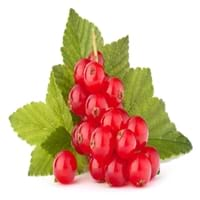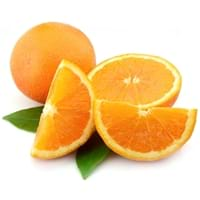Health Benefits
Cancer prevention, Gout treatment, Heart care, Regulation of heart rate, Treatment of rheumatism
Arthritis treatment, Cancer prevention, Heart care
General Benefits
Anti oxidant properties, Controls blood pressure, Cures fever, Digestive aid, Healing of wounds, Helps in weight loss, Strengthens bones
Anti-inflammatory properties, Cures cough, Cures fever, Digestive aid, Healing of wounds, Maintains healthy cholesterol level
Skin Benefits
Brightens and lightens complexion, Reduces wrinkles, Treatment of acne
Anti-aging benefits, Brightens and lightens complexion, Reduces wrinkles, Treatment of dark spots
Hair Benefits
Protects hair
Promotes longer and healthier hair, Protects hair, Rejuvenates scalp, Shiny hair
Allergy Symptoms
Abnormally rapid heart rate, Anaphylaxis, Breathing difficulty, Hives, Itching, Swallowing difficulties
Abdominal cramps, Hives, Itching, Nausea, Wheezing
Side Effects
Possibly unsafe during pregnancy
Allergic reaction, Skin rash, Possibly unsafe during pregnancy
Best Time to Eat
Best if taken as a breakfast (or empty stomach), As a snack in the late afternoon, Don't eat after meal, Morning time (before lunch)
As a snack in the late afternoon, Eat the fresh ones, avoid mixing with any other foods, don't eat after meal., Morning time (before lunch), Strictly avoid empty stomach
Vitamin B5 (Pantothenic Acid)
Vitamin C (Ascorbic Acid)
Vitamin K (Phyllochinone)
Calories in Fresh Fruit with Peel
Not Available
Calories in Fresh Fruit without Peel
Not Available
Calories in Frozen Form
Not Available
Not Available
Calories in Canned Form
Not Available
Varieties
Rovada, Stanza, Red Lake, Junifer and Jonkheer van Tets
Clementine, Dancy, King Mandarin, Murcott, Ponkan, Robinson, Satsuma and Sunburst
Taste
Sour, Tart
Sweet-Sour
Origin
Europe
South-Eastern Asia
Grows on
Trees
Not Available
Soil Type
Moist, Well-drained
Well-drained
Climatic Conditions
Cold
Sunny
Facts about
- The albino version of red currants known as white currants, are often sold as different fruit.
- Red currant tea is healthy substitute for coffee.
- There are more than 150 varieties of red currants.
- It is known by another name ' Mandarin'.
- Oil extracted from its peel is used in various skin and hair care products.
- Tangerines is also known as the ‘Christmas Orange’ because it is used to stuff kids' stockings..
Spirits
Yes
Not Available
Cocktails
Yes
Not Available
Top Producer
Russia
China
Other Countries
Belgium, France, Germany, Ireland, Italy, Netherlands, Poland, Portugal, Scotland, Spain, Sweden, United Kingdom
Brazil, Iran, Italy, Japan, Korea, Morocco, Spain, Turkey
Top Importer
Germany
China
Top Exporter
Russia
Spain
Botanical Name
Ribes rubrum
Citrus reticulata
Synonym
Not Available
Citrus clementina or Citrus nobilis
Subkingdom
Tracheobionta
Tracheobionta
Division
Magnoliophyta
Magnoliophyta
Class
Magnoliopsida
Magnoliopsida
Order
Saxifragales
Sapindales
Family
Grossulariaceae
Rutaceae
Species
R. rubrum
C. reticulata
Generic Group
Saxifrage
Citrus fruit
Compare Red Currant and Tangerine
It is important compare Red Currant and Tangerine as both the fruits have a different nutritional value. Their comparison can be done on the basis of their vitamin and mineral content, calories, benefits as well as characteristics, making it easier for us to choose the best fruit for our diet. Their general health benefits are as follows:
Red Currant Benefits: anti oxidant properties, controls blood pressure, cures fever, digestive aid, healing of wounds, helps in weight loss and strengthens bones.
Tangerine Benefits: anti-inflammatory properties, cures cough, cures fever, digestive aid, healing of wounds and maintains healthy cholesterol level.
Fruits are also used as a remedy for various hair problems. The hair benefits of Red Currant are: protects hair and hair benefits of Tangerine are: promotes longer and healthier hair, protects hair, rejuvenates scalp and shiny hair. Some fruits are known to cause allergic reactions. The allergy symptoms of first fruit are: abnormally rapid heart rate, anaphylaxis, breathing difficulty, hives, itching and swallowing difficulties and the symptoms of second fruit are: abdominal cramps, hives, itching, nausea and wheezing. Get sorted Red Currant vs Tangerine comparison with the help of fruit comparison tool by fruitvs.com.









